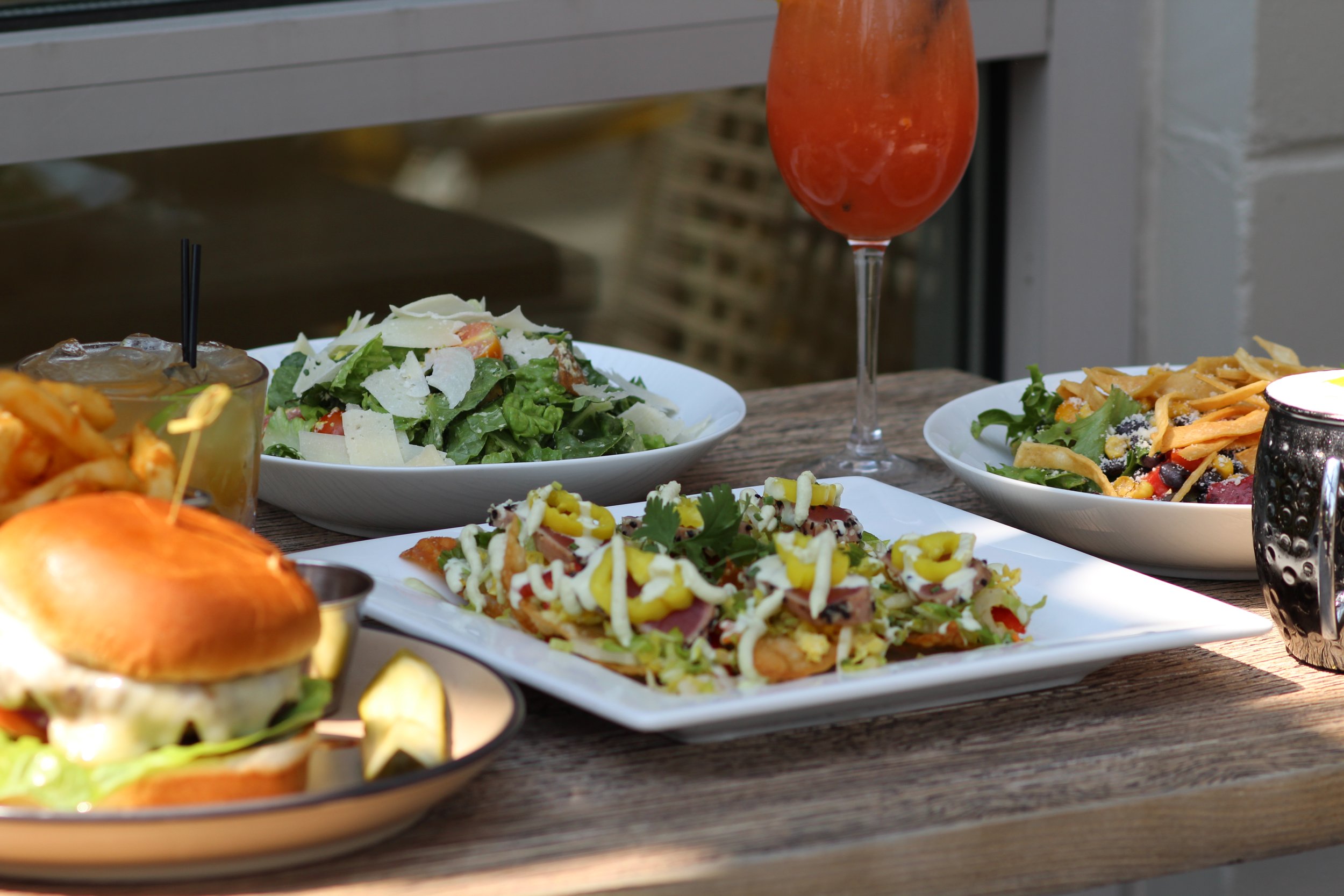Pan Asian Dining Islamabad: Appreciate Authentic Asian Recipes
Pan Asian Dining Islamabad: Appreciate Authentic Asian Recipes
Blog Article
Savor Authentic Asian Food With a Pan-Asian Spin for a Cooking Experience
Beginning on a culinary trip through genuine Eastern food, boosted with a Pan-Asian twist, supplies an unique chance to explore the abundant tapestry of flavors that specify the area's varied cooking customs. As you ponder these luring meals, take into consideration the cultural narratives and historic impacts that form them, each bite using a story waiting to be found. asian fusion restaurant.

Exploring Pan-Asian Tastes
In the world of global gastronomy, Pan-Asian cuisine stands out for its amazing diversity and the unified interaction of tastes from numerous Eastern cultures. This culinary approach celebrates the unique ingredients and abundant traditions located throughout the continent, creating a tapestry of tastes that is both appealing and satisfying. Key to Pan-Asian cuisine is its capacity to stabilize different flavors-- wonderful, salty, spicy, and sour-- while highlighting the freshness and quality of each ingredient.
From the umami-rich soy sauce of Japan to the fiery chili peppers of Thailand, Pan-Asian cuisine supplies a considerable combination of flavors. These components are commonly combined in inventive means, enhancing dishes with layers of complexity. For instance, making use of aromatic herbs such as lemongrass and cilantro, common in Vietnamese and Thai cuisine, includes a rejuvenating illumination to dishes, while the incorporation of coconut milk provides a creamy, abundant appearance.
The emphasis on fresh produce and aromatic seasonings guarantees that each dish is not just a feast for the preference buds but likewise for the detects. Pan-Asian food welcomes diners to start a culinary journey, discovering the vast and varied landscapes of Eastern gastronomy with every bite.
Fusion Recipes to Try
While Pan-Asian cuisine is commemorated for its standard tastes, the modern-day cooking landscape is significantly embracing combination dishes that blend these classic components with impacts from other areas. This cutting-edge strategy not only honors the rich heritage of Oriental cooking arts however additionally presents unique taste experiences that attract contemporary palates.
A prime example of such a combination dish is the Korean-Mexican taco, where seasoned bulgogi beef is covered in a warm tortilla, topped with kimchi and a zesty gochujang-infused salsa. This mix marries the strong, mouthwatering tastes of Korea with the lively, fresh components of Mexican cuisine. Likewise, sushi burritos have obtained popularity, integrating the fragile creativity of Japanese sushi with the passionate, hand-held ease of a burrito, often featuring blend components like tempura shrimp and avocado with a drizzle of wasabi mayo.
An additional significant dish is Thai curry ramen, which instills the luscious, fragrant spices of Thai curry into the comforting broth of traditional Japanese ramen, developing a harmonious blend that tantalizes the senses. These combination recipes expand past mere novelty; they stand for a cooking discussion in between societies, urging expedition and development on the planet of Pan-Asian cuisine.
Important Components and Seasonings
To really value Pan-Asian food, one need to recognize the essential components and seasonings that form its foundation. This diverse culinary style attracts from a rich tapestry of Eastern traditions, employing an unified blend of flavors and structures.
Aromatic aspects are critical, with lemongrass, ginger, and garlic being common throughout numerous Pan-Asian recipes. These ingredients provide a great smelling base that boosts the complexity of tastes. Flavors such as star anise, cardamom, and cinnamon introduce heat and character, echoing impacts from regions like China and India.

Food Preparation Techniques and Tips
Mastering the art of Pan-Asian food calls for familiarity with its distinctive food preparation methods, each contributing to the lively tapestry of tastes this culinary custom is commemorated for. Central to these methods is the stir-fry, a fast food preparation method that maintains the dietary honesty and vivid colors of active ingredients. Utilizing a wok, the stir-fry method enables even warmth distribution, vital for attaining the characteristic appearance and flavor equilibrium of Pan-Asian dishes.
An additional basic strategy is steaming, especially common in Chinese cuisine. This gentle technique keeps the natural flavors and nutrients of active ingredients, making it suitable for fish and shellfish and his explanation vegetables. Dumplings, a beloved staple, frequently gain from steaming, resulting in soft, delicious structures.
Barbecuing, also indispensable, presents smoky midsts to meals such as Korean bulgogi or Japanese yakitori (asian restaurant isb). This method frequently involves seasoning active ingredients, allowing tastes to permeate deeply before food preparation over an open flame or warmer
Lastly, mastering the art of stabilizing tastes-- pleasant, sour, salty, bitter, and umami-- is critical. Appropriately layering these components can raise a meal from ordinary to phenomenal, using a complex and pleasing culinary experience that symbolizes the essence of Pan-Asian cuisine.
Eating Experiences Worldwide
Around the world, Pan-Asian food provides an unparalleled eating experience, celebrated for its abundant tapestry of tastes and vibrant discussions. This culinary phenomenon has actually gone beyond cultural boundaries, capturing the hearts and tastes of food enthusiasts worldwide. In worldwide cities like New York, London, and Sydney, Pan-Asian restaurants offer as fusions where cooking traditions from Thailand, Japan, China, and beyond merge, providing restaurants with a diverse mix of recipes that highlight the region's diversity.
The global allure of Pan-Asian food exists in its ability to provide both authenticity and development. Chefs masterfully marry typical active ingredients such as lemongrass, soy sauce, and miso with modern strategies, causing dishes that are both refreshingly brand-new and familiar. This fusion allows diners to start a culinary trip that appreciates heritage while welcoming modernity.
In addition, eating experiences are boosted via thoughtfully created environments that show the ethos of Pan-Asian looks. From minimalist Japanese-inspired interiors to dynamic Thai-themed rooms, each dining establishment supplies a special ambiance that complements the culinary offerings. Because of this, customers are not merely consuming a meal however partaking in a social experience, making Pan-Asian dining a truly worldwide phenomenon.
Final Thought
The exploration of Pan-Asian food uses a profound understanding of the complex interplay of tastes and culinary practices across Asia. By embracing fusion meals such as Thai curry ramen and sushi burritos, the culinary journey not only highlights the adaptability of traditional ingredients but additionally showcases ingenious modern-day techniques. This news gastronomic journey, enriched by necessary flavors and cooking techniques, gives an unique opportunity to appreciate the social diversity and cooking virtuosity that define Pan-Asian cuisine on a worldwide range.
Beginning on a culinary trip via authentic Oriental cuisine, boosted with a Pan-Asian twist, uses an unique possibility to explore the rich tapestry of tastes that specify the area's varied culinary practices.In the world of worldwide gastronomy, Pan-Asian cuisine stands out for its amazing variety and the harmonious interaction of flavors from different Asian cultures. Secret to Pan-Asian food is its capability to stabilize contrasting Homepage tastes-- pleasant, salted, spicy, and sour-- while highlighting the freshness and high quality of each active ingredient.

Report this page